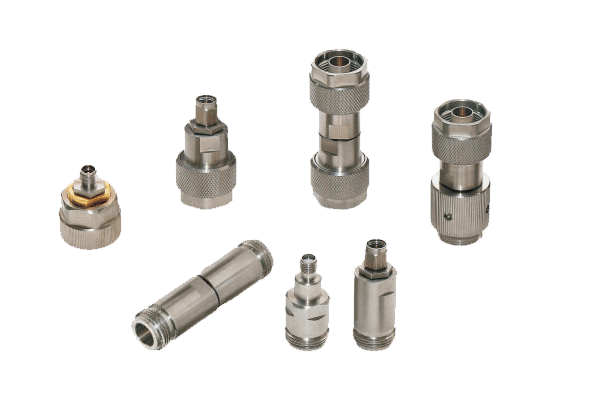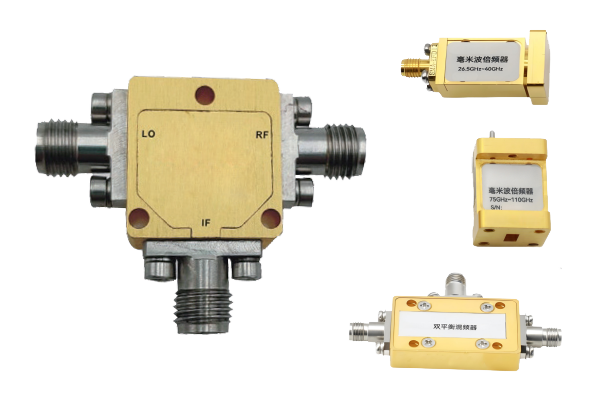
Pin diode components are considered indispensable in advanced RF applications because of their core operational properties Their high-speed switching performance and low capacitance along with negligible insertion loss position them well for switch modulator and attenuator implementations. The underlying principle of PIN diode switching involves controlling charge flow through the junction by biasing the device. Biasing the diode adjusts the depletion region size in the p-n junction, changing its conductive state. Modifying the applied bias permits PIN diodes to function at high frequencies with minimal signal distortion
In systems that require precise timing and control PIN diodes are commonly integrated into sophisticated circuit topologies They can function inside RF filters to permit or attenuate targeted frequency bands. Their robust power handling means they can be used in amplifier power distribution and signal generation roles. The development of compact efficient PIN diodes has increased their deployment in wireless communication and radar systems
Evaluating Coaxial Switch Design and Functionality
Creating coaxial switches is a challenging task that demands consideration of a variety of technical parameters Key factors such as switch category operating band and insertion loss shape the coaxial switch performance. A good coaxial switch design aims to minimize insertion loss and maximize isolation across ports
To analyze performance one must evaluate metrics such as return loss insertion loss and isolation. Measurements rely on simulation, theoretical models and experimental test setups. Accurate performance evaluation is key to ensuring coaxial switches operate dependably
- Simulation packages analytic approaches and lab experiments are commonly applied to analyze coaxial switch designs
- Temperature, mismatched impedances and manufacturing variances often have strong effects on switch performance
- New advances trends and innovations in coaxial switch engineering aim to enhance performance metrics while cutting size and power consumption
Optimizing LNA Designs for Performance
Optimizing the LNA’s gain efficiency and operational performance is central to maintaining signal integrity The process needs precise choice of transistors bias points and topology design. A robust LNA layout minimizes noise inputs while maximizing amplification with low distortion. Modeling and simulation tools enable assessment of how transistor choices and biasing alter noise performance. Reducing the Noise Figure remains the design target to ensure strong signal retention with minimal added noise
- Opting for transistors with small inherent noise is a vital design decision
- Optimal proper and suitable bias conditions are necessary to limit noise generation in transistors
- Circuit topology significantly influences overall noise performance
Techniques of matching networks noise cancellation and feedback control contribute to improved LNA operation
Wireless Path Selection via PIN Switches

Pin diode based switches enable adaptable and effective RF signal routing in various use cases These semiconductors can be rapidly switched on or off allowing dynamic path control. Low insertion loss combined with excellent isolation is a primary advantage that reduces signal degradation. They are commonly used in antenna selection duplexers and phased array RF antennas
Switching depends on bias-induced resistance changes within the diode to route signals. In the open or deactivated condition the device offers large resistance that prevents signal passage. When a positive control voltage is applied the diode resistance decreases reduces or falls allowing RF signals to pass
- Further advantages include fast switching low power requirements and compact design of PIN diode switches
Multiple configurable architectures and design schemes of PIN diode switches facilitate complex routing operations. Through interconnection of switches one can construct dynamic matrices for adjustable signal path routing
Performance Assessment for Coaxial Microwave Switches

Rigorous evaluation and testing of coaxial microwave switches are key to confirming dependable operation in electronics. Diverse factors including insertion reflection transmission loss isolation switching speed and frequency span impact performance. An exhaustive evaluation procedure measures these parameters across varied operating environmental and test conditions
- Furthermore moreover additionally the evaluation should consider reliability robustness and durability plus the ability to tolerate harsh environmental stresses
- Ultimately comprehensive evaluation outputs provide critical valuable and essential guidance for switch selection design and optimization for targeted uses
Extensive Review on Minimizing Noise in LNA Designs
LNAs are indispensable in wireless RF communication systems because they raise weak signals while suppressing noise. The review provides a comprehensive examination analysis and overview of noise reduction techniques for LNAs. We examine investigate and discuss the fundamental noise sources including thermal shot and flicker noise. We also examine noise matching feedback circuitry and optimal biasing strategies to mitigate noise contributions. The article highlights recent advances such as novel semiconductor materials and innovative circuit architectures that reduce noise figure. By providing insight into noise minimization principles and practices the review supports researchers and engineers working on high performance RF systems
High Speed Switching Applications for PIN Diodes

Their remarkable unique and exceptional electrical traits make them apt for high speed switching systems Their small capacitance and low resistance facilitate high speed switching suitable for accurate timing control. Additionally their linear response to applied voltage aids in accurate amplitude modulation and switching behavior. The combination of adaptability versatility and flexibility makes them suitable applicable and appropriate across many high speed applications Common applications encompass optical communications microwave circuits and signal processing hardware and devices
Coaxial Switch Integration with IC Switching Technology
Integrated circuit coaxial switch technology marks a significant advancement in signal routing processing and handling within electronic systems circuits and devices. These integrated circuits are tailored to control manage and route signals via coaxial connections with high frequency performance and low insertion latency. IC driven miniaturization allows compact efficient reliable and robust designs tailored to dense interfacing integration and connectivity requirements
- With careful meticulous and rigorous execution of these strategies designers can obtain LNAs exhibiting excellent noise performance for sensitive reliable systems Through careful meticulous and rigorous implementation of these approaches engineers can achieve LNAs with exceptional noise performance supporting sensitive reliable pin diode switch systems Through careful meticulous and rigorous implementation of these approaches engineers can achieve LNAs with exceptional noise performance supporting sensitive reliable systems By meticulously carefully and rigorously applying these methods developers can produce LNAs with superior noise performance enabling sensitive reliable electronics
- Deployment areas span telecommunications data communications and wireless networking environments
- Coaxial switch IC implementations support aerospace defense and industrial automation applications
- Consumer electronics audio visual equipment and test and measurement systems are typical domains
Design Tips for Low Noise Amplifiers in mmWave Bands

LNA design at millimeter wave frequencies faces special challenges due to higher signal attenuation and amplified noise impacts. At high mmWave frequencies parasitic capacitances and inductances can dominate requiring precise layout and part selection. Keeping input mismatch low and power gain high is critical essential and important in mmWave LNA designs. Active device choice, e g HEMTs GaAs MESFETs InP HBTs, is critical for low noise performance at mmWave. Moreover additionally moreover the design implementation and optimization of matching networks is vital to ensure efficient power transfer and impedance match. Package-level parasitics should be considered because they may impair LNA function at mmWave. Selecting low-loss transmission paths and optimal ground plane layouts is essential necessary and important for reducing reflection and preserving bandwidth
Modeling Strategies for PIN Diode RF Switching
PIN diodes perform as significant components elements and parts across various RF switching applications. Precise accurate and detailed characterization of such devices is essential for designing developing and optimizing reliable high performance circuits. This requires analyzing evaluating and examining electrical properties including voltage current resistance impedance and conductance. The characterization includes frequency response bandwidth tuning capabilities and switching speed latency or response time
Furthermore moreover additionally accurate model and simulation development for PIN diodes is vital essential and crucial for behavior prediction in RF systems. Several diverse modeling approaches exist such as lumped element distributed element and SPICE models. Which model simulation or representation to use depends on the particular application requirements and the expected required desired accuracy
Sophisticated Advanced Methods for Minimal Noise Amplifiers
LNA engineering calls for careful topology and component selection to meet stringent noise performance goals. Recent advances in semiconductor tech have unlocked innovative groundbreaking sophisticated LNA design techniques that diminish noise greatly.
Examples of techniques are implementing employing and utilizing wideband matching networks choosing low noise transistors with strong intrinsic gain and optimizing biasing schemes strategies and approaches. Moreover advanced packaging techniques and effective thermal management significantly contribute to reducing external noise sources. With careful meticulous and rigorous deployment of these approaches developers can accomplish LNAs with outstanding noise performance enabling trustworthy sensitive electronics
